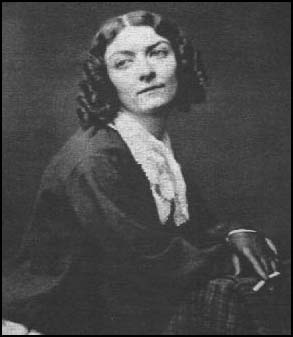Born in 1620, Ninon de Lenclos was a fantastically gifted French courtesan from the time of Kings Louis XIII and XIV. She was a modern woman, independent and sexy, who held literary salons attended by princes, poets and philosophers. Ninon’s own philosophy combined her personal blend of Epicurean thought mixed with hedonism and skepticism. I don’t know what that means exactly, but it sounds very modern, which Ninon was.
Ninon de Lenclos was a classic bad girl—-she never married, lived to please herself, and enjoyed a dual nature that craved sensuality yet embraced the idea that self-discipline and work are the source of freedom. She was a devoted friend, but her lovers came and went. People said she had three classes of admirers: payers, martyrs and favorites.
Payers, the ones who lavished the most money and praise on her, were the ones she liked least. Ninon refused their offers of jewels and other presents, telling them to just give her the cash. Somehow, she managed to avoid having sex with them. Supposedly. She also supposedly avoided sexual encounters with men she believed to be her intellectual equal. Ninon had decided when very young to live as a man, and she bored quickly of her sexual conquests. “I think I may love you for three months, and that’s an eternity for me,” she wrote to one of her lovers. Payers lasted for as long as she needed their money. Ninon had no qualms about outright prostitution, especially in the early years when she was building her fortune.
"An insane desire to burst out laughing”As for the martyrs, the ones who sighed and lounged about hopelessly at her salons, Ninon kept them around because they boosted her public image, helping her look deliciously unattainable. And the favorites, when she actually had feelings for them, received the full force of her emotions. Even when angry, she remained intriguing. Of one love affair, she was alleged to have written: “I sometimes took it into my head to notice what we were saying, and the way we were saying it. Directly I did so, I became possessed with an insane desire to burst out laughing.”
So that’s Ninon de Lenclos, who lived to be a very old woman and met Voltaire as a boy before she died in 1706, or maybe 1703, no one’s really sure. She's still revered in France for being a brainy sexpot who wrote witty little maxims. Here's one: “A sensible woman will consult her reason before she takes a husband, but her heart when she takes a lover."
But maybe Ninon really didn’t write those maxims. It's just as likely that the writers who invented her legend wrote them because they wanted a woman like Ninon to exist. The more I’ve researched her, the more I’ve realized how much of her story was made up after she died by self-described historians. At first I was disappointed to realize just how much was made up, but then it started to fascinate me.
The big lieAs a journalist, I try to be ethical. Call me foolish, but I verify my sources, and I try to be objective in telling the truth. But when I started researching bad girls at the British Library, I saw how unimportant those petty details seemed to be in an earlier time. Back in the day, a lot of historians made up stuff entirely and would use each other as sources, confirming one another’s stories by repeating them over and over. In this way, Ninon’s so-called biographers invented her truth for all time.
And now, as I write about Ninon, I may be adding to the big lie. But it’s hard to resist, because the non-truths told about her are so entertaining. And also, I want to share what I learned about her and how I learned about it—-which ends up being my story, not Ninon’s.
As I mentioned, I researched Ninon de Lenclos at the British Library. I love that library. For almost a year, I made frequent trips there and came to love the ritual of entering the building, putting my belongings in a locker, passing inspection by the security guard to ensure that I had no pens, only pencils, to write with, and that I wasn’t secreting any documents in my small handbag, then finally gaining access to the inner circle of the reading rooms. These rooms were sacred places where you could see the thoughts circling around the readers’ heads in a fine mist. The rooms were silent and filled with so many people, each intent on a private mission of scholarship. A good library is one of the grandest things of city life.
Looking for the dirty partsIt was a strange and special place to study bad girls. My mission was to dig up old books and look for all the dirty parts. The best room for this was the Rare Book Room, where I once put in a request to read the first edition of the
Kama Sutra and a librarian arrived at my desk about an hour later wheeling a cart filled with a dozen or so crumbling volumes that spoke of love and sex in Middle Eastern antiquity.
On the day I looked up Ninon de Lenclos, I came across a yellowed old text printed by Isaiah Thomas in Worcester, England, in 1804. No author was credited, and the book’s title was as follows:
Eccentric Biography; or Memoirs of Remarkable Female Characters, Ancient or Modern. Including, Actresses, Adventurers, Authoresses, Fortunetellers, Gipsies, Dwarfs, Swindlers and Vagrants. Also Many Others Who Have Distinguished Themselves by Their Chastity, Dissipation, Intrepidity, Learning, Abstinence, Credulity, &c. &c. Alphabetically Arranged. Forming a Pleasing Mirror of Reflection to the Female Mind.Yes, this was the stuff. According to the library’s online database, I would learn about Ninon de Lenclos in this book. I was hoping to find outright pornography, actual quotes from Ninon speaking about her love affairs—-the exact sexual positions, the dirty talk, the moods of the moment—-an evocation of passion that I would be able to feel, physically. To the point where I would behold a holographic image of the living, breathing Ninon before my very eyes, and she would reach out and talk to me, touch me.
Raton: a taperly dogWhat I got, instead, was a description of Ninon’s dog, Raton. And now, finally, I’ve led you far enough along the path of my bad girl research so you can savor this moment, when I quote extensively from a crumbly old book that recounts a big fat lie about a now-dead whore. I quote verbatim from the text, without changing any spellings or punctuation marks:
“We learn from M. Mercier that this lady had a favorite small dog, taperly & elegantly formed with yellow hair. Wherever this celebrated lady…was invited, Raton was sure to be her constant companion. She placed him in an elegant little basket near her plate, and he was literally, her officer of health. He maintained most strictly that regimen of his mistress, which preserved her beauty, good humour, & her health, to the advanced age of nearly a hundred years. He did not suffer her to make use of coffee, of ragouts, or of liqueurs. Raton suffered quietly to pass him the soup, the bouilli, and the roti, but if his mistress seemed inclined to touch the ragouts, he growled, fixed his eyes upon her, and sternly interdicted the use of these enticing dishes….When the dessert came, however, he sprung quickly from his basket, gamboled on the cloth, paid his compliments to the ladies, and received in return for his caresses a few macaroons, of which 2 or 3 satisfied his appetite.”As far as I’m concerned, the image of Ninon’s dog trotting across the table at a swank 17th-century French dinner party is worth all the lies and distortions that went into his creation. I’ve thought about Raton more times than I care to mention. According to
Eccentric Biography, this handsome governor, so loving, and yet so austere, is stuffed at the Cabinet of Natural History. I’ve been tempted to visit the Cabinet myself, to verify Raton’s existence objectively and scientifically, but the book doesn’t mention in which city or country the Cabinet is located.






